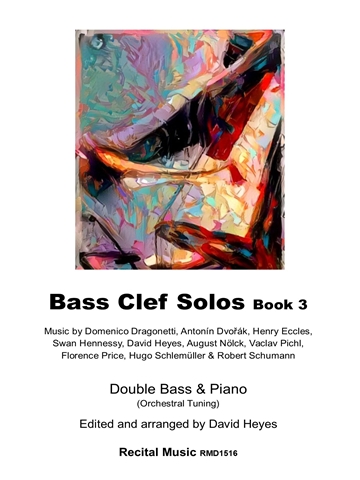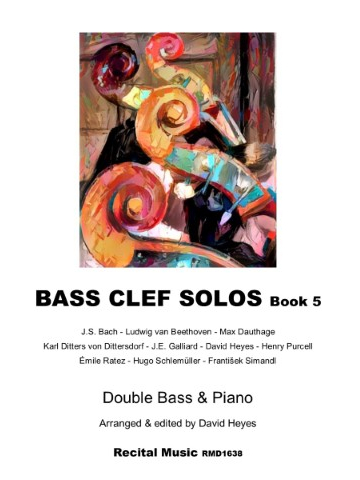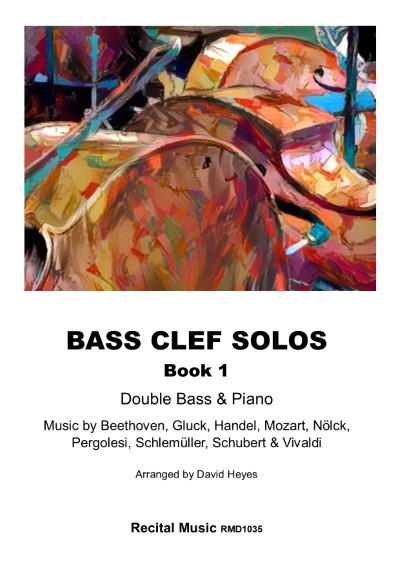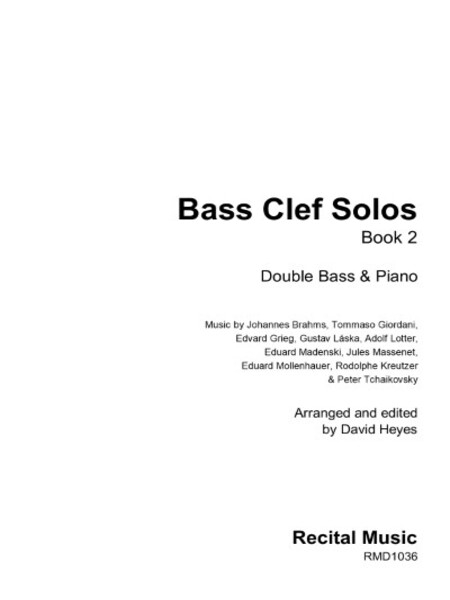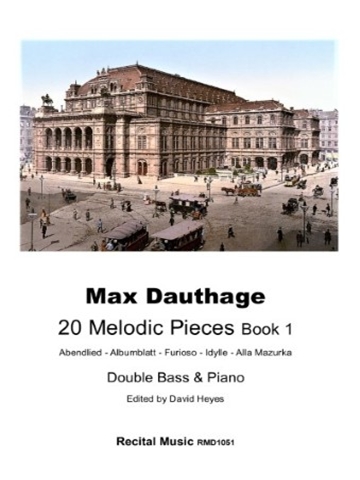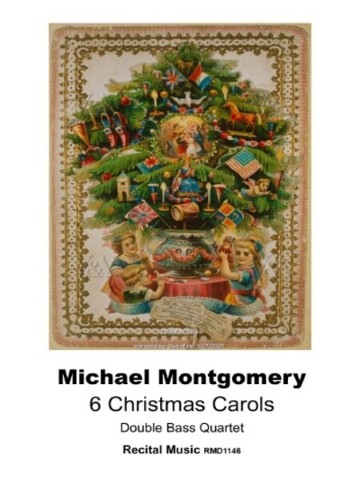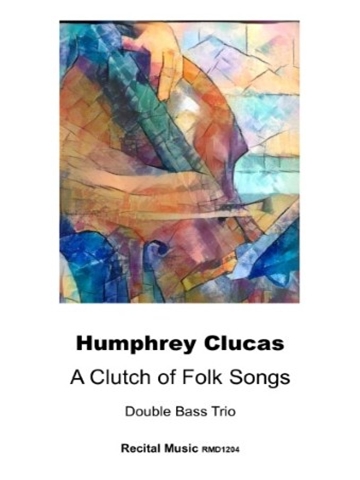Your basket is currently empty!
Bass Clef Solos Book 4
Orchestral Tuning
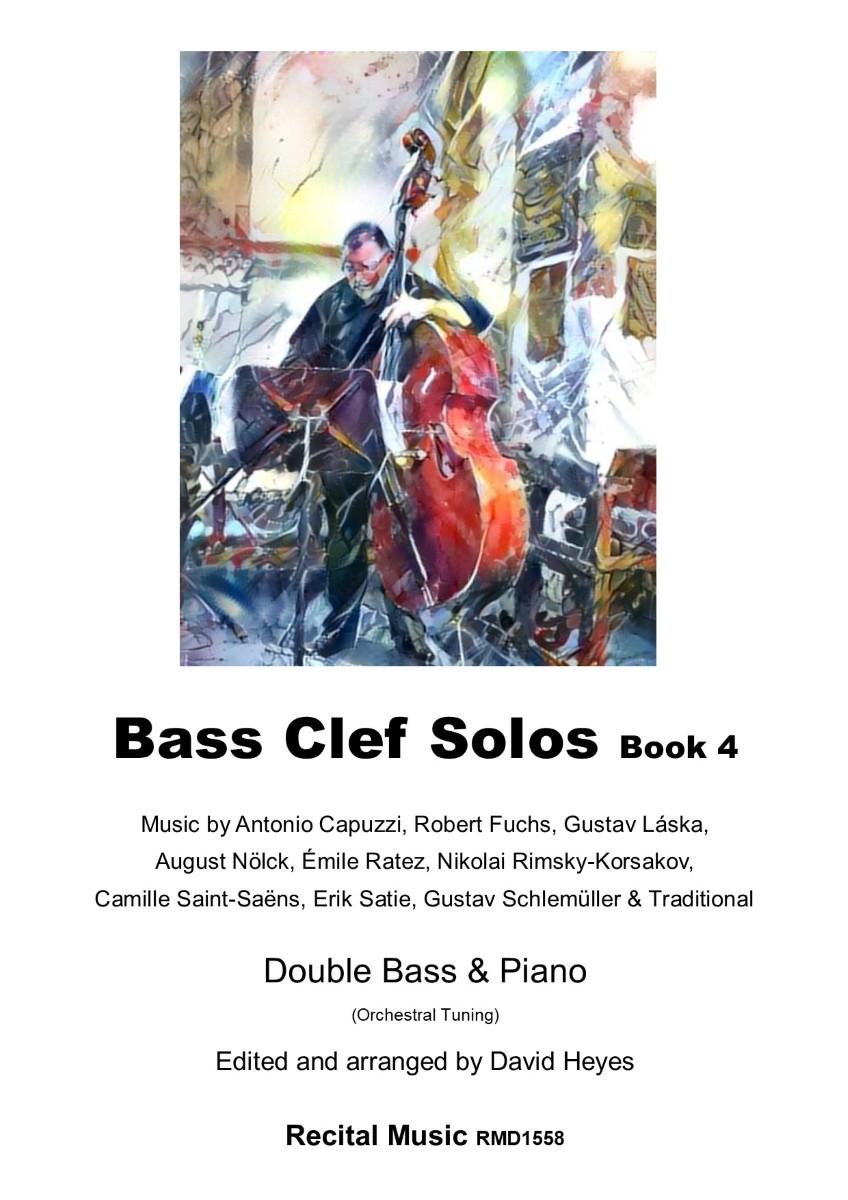
Description
Bass Clef Solos is a series featuring fifty original works and transcriptions for the intermediate and progressing double bassist.
Divided into five books, each piece …offers both musical and technical challenges in the orchestral range of the instrument, remaining in bass clef throughout, which are ideal for both study or concert use.
Edited by David Heyes, the series includes music from the 16th to the 21st-century, in a range of styles and idioms, with something to suit most tastes.
Each piece has been carefully selected for the series, with piano accompaniments that are supportive and accessible, creating an exciting and innovative collection that should appeal to bassists of all ages.
Bass Clef Solos Book 4 includes ten exciting and inventive pieces for the intermediate bassist, suitable for both concert and study repertoire. The collection features six original works and four transcriptions in popular and accessible styles, from the 18th to the 21st-century.
Available in orchestral tuning only.
1) Robert Fuchs (1847-1927) – Lyric Piece No.1
Three Pieces Op.96 for double bass and piano was composed in 1912 and first published in Vienna the following year. The suite was written for Karl Schreinzer (1884-1960) who was a bassist with the Wiener Staatsopernorchester and Wiener Philharmoniker and also Professor of Double Bass at the Vienna Music Academy from 1938-50. The first piece is spirited and engaging, making effective use of the orchestral register with a marking frei nach Mozart (based on Mozart). The accompaniment is inventive and vivid, with enormous drive and momentum, adding greatly to the success of the piece.
2) Nikolai Rimsky-Korsakov (1844-1908) – Mazurka
Mazurka is a short and characterful miniature with striking dance rhythms and influences throughout. The melodic interest is given primarily to the double bass, with a strongly supportive accompaniment, creating a work of elegant melodic phrases alongside piquant driving rhythms.
3) Gustav Láska (1847-1928) – Waltz No.1
Included in Láska’s Kontrabass-Schule Op.50 (Book 2) and published in 1904, Waltz No.1 is charming and elegant making excellent use of the middle register of the double bass. Originally an exercise in ornamentation, this brief and effective concert waltz has a beautifully inventive piano accompaniment which enables the soloist to enjoy fleeting snatches of melody.
4) Gustav Schlemüller – Perpetuum Mobile
This is an amazing technical workout for the intermediate bassist and is ideal as both study and concert repertoire. Scale and arpeggio based, this is a fun and invigorating piece which offers much to performers and audiences alike.
5) Camille Saint-Saëns (1835-1921) – The Elephant
In just 52 bars Saint-Saëns created a minor musical masterpiece. The music is witty and cleverly written to describe the elephant with the introduction of dance music by Berlioz and Mendelssohn adding an extra touch of magic.
This is probably the first piece to introduce the double bass to a general audience and the composer imaginatively uses the lower orchestral register to describe the lumbering beast. The Elephant is the fifth piece from The Carnival of the Animals, which has delighted audiences for a century, and this edition has retained the composer’s original bowings.
6) Traditional – Greensleeves
Greensleeves is a traditional English folk song and dates back to Elizabethan times. A ballad named ‘A Newe Northern Dittye of ye Ladye Green Sleves’ was first registered by Richard Jones at the London Stationers’ Company in September 1580, and it is rumoured to be based on an Italian style of composition. The music is the basis of the Christmas carol ‘What Child is this?’ and has remained part of popular musical culture for over 400 years.
7) Erik Satie (1866-1925) – Gymnopédie No.1
Satie’s Trois Gymnopédie for piano were completed in 1888 with the title coming from the French form of gymnopaedia, the ancient Greek word for an annual festival of dancing. All three pieces are in 3/4 time and the melodies use deliberate but mild dissonances against a simple chordal accompaniment. No.1 is marked douloureux (painfully) and is probably Satie’s most popular work, having been arranged for almost every conceivable instrumental or orchestral ensemble.
8) August Nölck (1862-1928) – Tempo di Ballo
Tempo di Ballo is originally for cello and piano and is taken from ‘Petit Album de Concert’, a suite of six colourful and effective concert miniatures.
Influenced by dance styles and rhythms, the music is elegant and stylish, with lyrical melodies contrasting music of a more urgent and buoyant nature, against a simple and inventive accompaniment which add colour and support.
9) Antonio Capuzzi (1755-1818) – Andante Cantabile
Capuzzi’s Concerto in D major for double bass is standard repertoire for the intermediate bassist, keeping the composer’s name alive into the 21st- century. Andante cantabile is the second of its three movements and features elegant melodies alongside arpeggio-based figures which add rhythmic interest and momentum. There are no dynamic markings offering effective opportunities for each bassist to create a unique interpretation.
10) Émile Ratez (1851-1934) – Parade Op.46, No.1
Parade is the first of Six Characteristic Pieces composed for Monsieur Charpentier, professor of double bass at the Paris Conservatoire, and presumably written for his students. Parade is lively rhythmic and fun, ideal for the intermediate bassist, with a supportive accompaniment which adds colour and rhythmic energy. Ratez was a fairly prolific composer, having studied composition with Jules Massenet at the Paris Conservatoire, subsequently becoming Director of the Lille Conservatoire.
R.R.P £11.5
Our Price £9.78
Shipping Costs: No shipping

